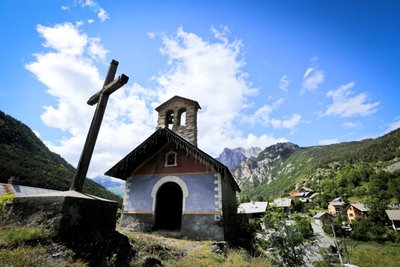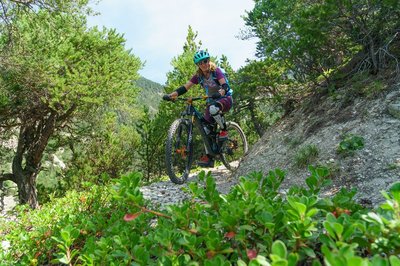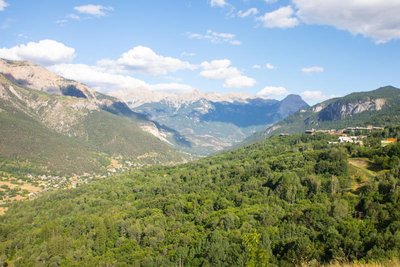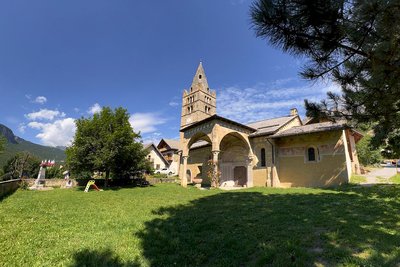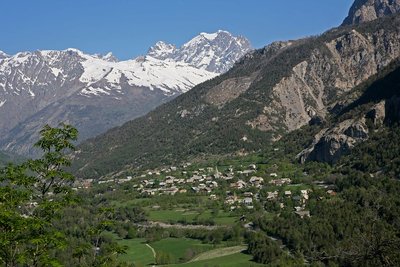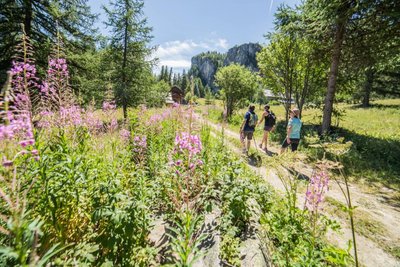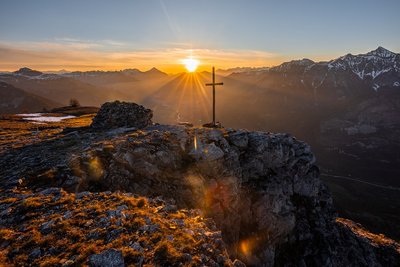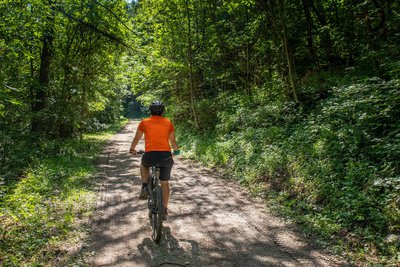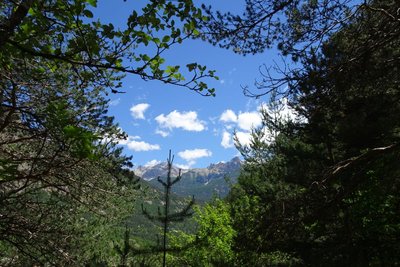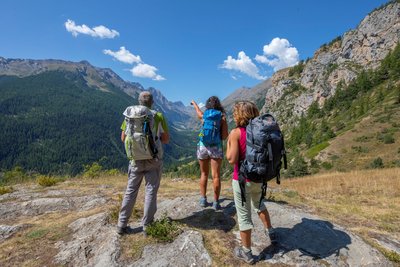
Start : The Vigneaux - the Vaudois campsite
Description
- Towns crossed : Les Vigneaux
8 points of interest
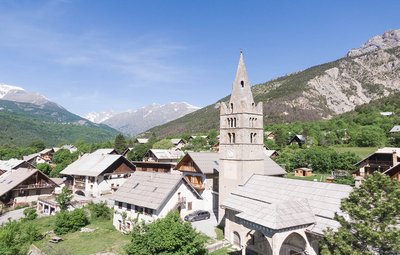
Eglise des Vigneaux - Blandine Reynaud - PDE  History
HistoryThe village of Les Vigneaux
In spite of the altitude, the region's dry climate and the local growing conditions of limestone and sediments facing due south made the planting of grapevines possible as far back as the tenth century. The municipality owes its name to the presence of these vineyard operations, which were very significant in the late nineteenth century. The almost simultaneous appearance of the phylloxera aphid and the Briançon train, bringing wine from Provence, spelled the end of this activity here.

L'église des Vigneaux - Office de tourisme Pays des Écrins  Vernacular heritage
Vernacular heritageThe church in Les Vigneaux
The church of Saint-Laurent with its elegant porch dates from the fifteenth and sixteenth centuries. On its south wall there are frescoes depicting the vices, dragged towards hell by a demon, and their punishments. Enough to make you shudder! Its Lombard Romanesque bell tower has a very rare one-handed clock dating from the eighteenth century. It is one of the oldest working clocks of its type.

Chevreuil - Robert Chevalier - Parc national des Écrins  Fauna
FaunaThe roe deer
The forest is home to roe deer, which can often be seen. This ungulate (hoofed mammal) is rather unusual because the rut does not take place in autumn, for births in May and June as is the case with other mountain-dwelling ungulates, but in summer. After fertilisation, however, egg development is suspended for 6 months (this is called embryonic diapause). Gestation then resumes so that the fawn (or twin fawns) can be born in spring, a period more favourable for its survival.
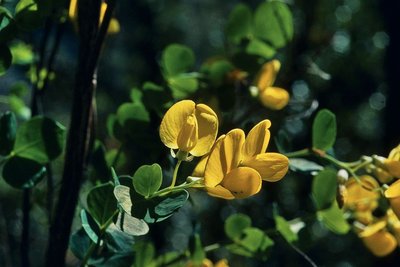
Le cytise à feuilles sessiles - Bernard Nicollet - Parc national des Écrins  Flora
FloraThe sessile-leaved cytisus
This small shrub which grows to 1 to 2 metres in light woods is characterised by three-lobed leaves on the flowering shoots which are sessile, that is to say without a stalk. It is easy to confuse with the scorpion senna, which has the same leaves but they are divided into 7 or 9 lobes. Both produce very beautiful yellow flowers in May to June.

La prêle des champs - Cédric Dentan - Parc national des Écrins  Flora
FloraThe field horsetail
At the bottom of a water fountain, on the edge of a ditch a plant grows which resembles a large bottle brush... or a horse's tail, depending on your imagination. It's the field horsetail, a plant related to ferns. It is known for its medicinal properties because it is rich in silica, a powerful remineraliser for the bones, cartilage and skin. There are several species of horsetail.
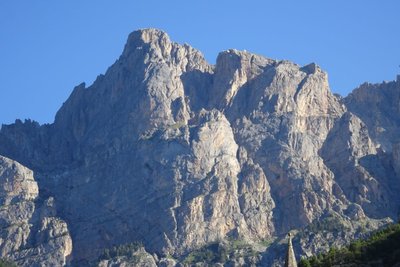
Vue sur le Massif du Montbrison - Office de tourisme Pays des Écrins  Panorama
PanoramaThe view over the Montbrison massif
The path offers a beautiful overall view of the limestone massif of Montbrison, overlooking the hamlets of Pelvoux and including the Cime de la Condamine, the Tête des Lauzières, the Pic de Montbrison and the Tête d'Amont.
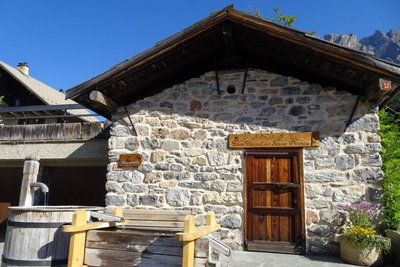
Le four banal des Vigneaux - Office de tourisme Pays des Écrins  Vernacular heritage
Vernacular heritageThe communal oven
Legend has it that the Lord caused a communal oven to be built and kept it maintained. The local people could use this oven in exchange for the payment of a levy. Families would prepare and knead their own dough at home and then bring it to the oven for baking. Names were drawn by lot to establish their turns.
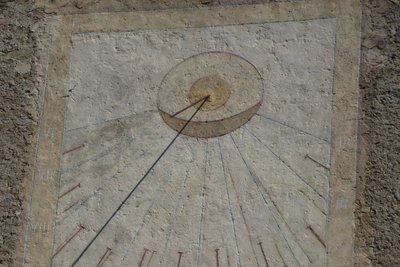
Cadran solaire de l'église des Vigneaux - Office de tourisme Pays des Écrins  Vernacular heritage
Vernacular heritageThe sundial
The sundial is an eighteenth-century tradition widespread across the Southern Alps where the sun is ever-present. Artisan sundial makers produced these sundials, which were added as a decoration to house fronts, religious buildings or, as here, a tower. The sayings inscribed on them make some of these artistic works philosophical as well as decorative.
Access
Source


